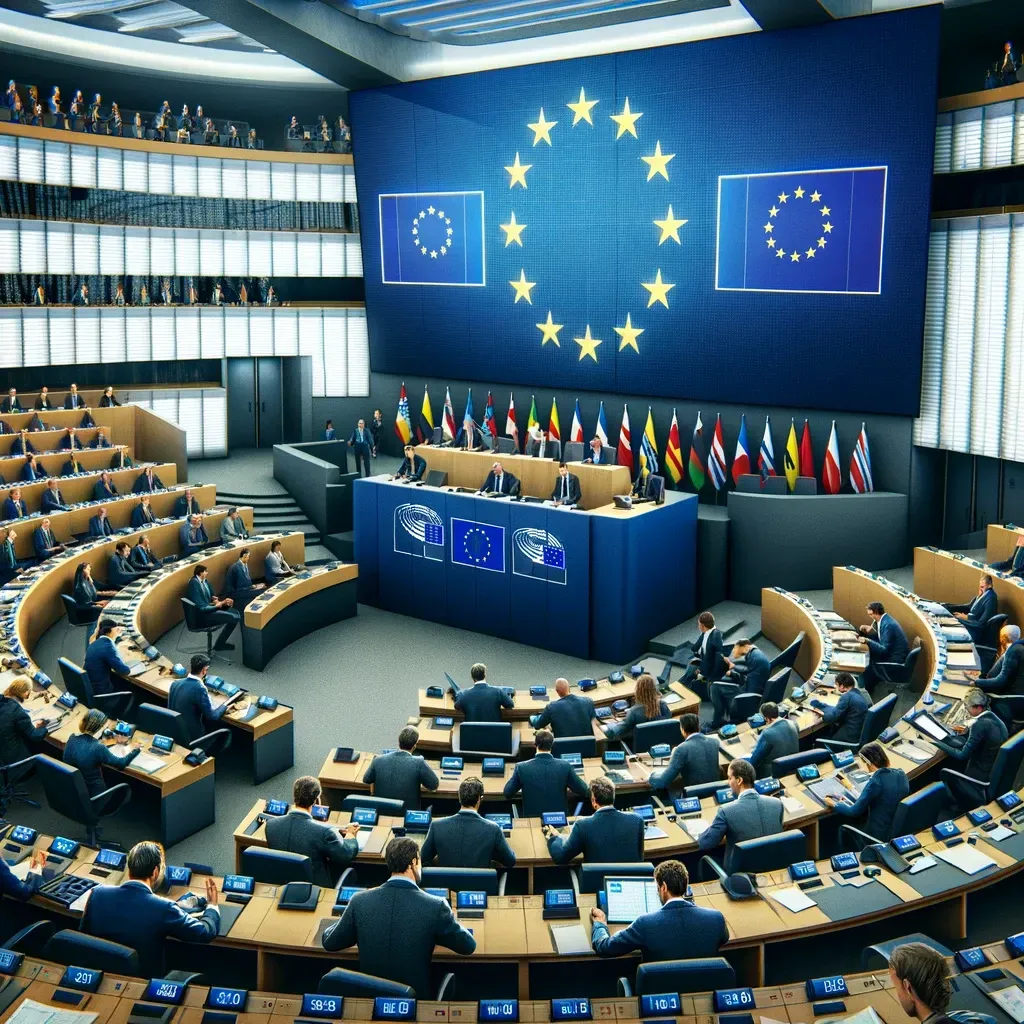Policy Briefing: Council Approves Two Directives on Sanctions Violation Criminalisation and Asset Recovery and Confiscation

On 12 April 2024, the Council adopted two key directives enhancing sanctions enforcement and implementation across the EU.
The first directive on sanctions violations criminalisation (Directive (EU) 2018/1673) establishes an EU-wide definition of sanctions violation as a crime, setting minimum administrative and criminal penalties, while the second directive on asset recovery and confiscation lays down the minimum standards for tracing, identifying, freezing, confiscating, and managing criminal assets, applicable to various crimes, including EU sanctions violations.
In our latest policy update, we provide an overview of the EU legislative process related to these directives, the most important measures they introduce, and outline key next steps regarding their implementation.
Background & Context
Following Russia’s full-scale invasion of Ukraine in February 2022, the EU imposed an unprecedented array of sectoral and individual sanctions against Russian individuals and entities. However, the implementation and the enforcement of these sanctions have posed great challenges for Member States, and for National Competent Authorities (NCAs).
As of date, EU sanctions regulations mandate Member States to enforce penalties deemed “effective, proportionate, and dissuasive” for infractions of restrictive measures and enforcement is mostly left in the hands of NCAs.
While most of the Member States (including France, the Netherlands and Cyprus) treat sanctions violations as criminal offenses, two countries (Estonia and Slovakia) still consider them administrative offenses, and fourteen countries (including Germany, Austria and Belgium) allow for categorization depending on severity. Prison sentences and maximum fines for the violation of restrictive measures also vary widely from one Member State to another. This inconsistent framework has triggered the need for the harmonization at EU level brought forward by the new directive.
Regarding asset freeze and recovery in the EU, the high number of individuals and entities sanctioned in the past two years has put a strain on NCAs to trace and identify the assets belonging to listed persons. The 2018 adoption of the regulation concerning mutual recognition of freezing and confiscation orders laid the foundation for cross-border asset recovery within the EU, facilitating the freezing and confiscation of criminal assets across Member States. Building upon this framework, the new directive establishes minimum standards and aims to enhance the effectiveness of asset recovery efforts and strengthen enforcement measures across the EU.
Below we outline the key measures introduced by the above-described EU directives.
Directive On the Definition of Criminal Offences and Penalties for the Violation of Union Restrictive Measures
The main elements of the EU Directive on Sanctions Violation Criminalization are the following:
- Definition of Criminal Offenses: Deliberate breaches of EU restrictive measures are defined as criminal offenses. Such breaches include making funds available to sanctioned individuals and entities, failing to freeze assets of designated parties, enabling designated parties to enter or transit through EU territory, engaging in sanctioned transactions with third states, trading in sanctioned goods or services, conducting sanctioned financial transactions, circumventing EU restrictions, failing by a designated party to disclose funds to NCAs, and violating conditions of authorizations granted by NCAs. Incitement, aiding, and abetting also constitute offenses, while offenses committed with “serious negligence,” particularly those related to military or dual-use items listed by the EU, are criminalized as well.
- Exemptions: Some breaches involving values under €10,000 are not defined as criminal offenses. These actions include making funds available to sanctioned parties, failing to freeze their assets, circumventing restrictions, transacting with third states, providing sanctioned services, or breaching conditions of an NCA-granted authorization for specific goods, services, or transactions.
- Criminal Penalties for Natural Persons: The penalties introduced by the directive include imprisonment and fines, with specified minimum terms for serious offenses (e.g., a minimum of five years for severe violations involving substantial amounts or values).
- Penalties for Legal Persons: Penalties for legal persons include both criminal and non-criminal fines. The fines are substantial, with a minimum level set at either a percentage of the legal person’s total worldwide turnover (up to 5%) or fixed amounts (up to EUR 40 million), depending on the severity of the offense.
- Aggravating and Mitigating Circumstances: Circumstances that can aggravate (organised crimes, forging documents), or mitigate (cooperation with authorities) the penalties for offenses have also been defined by the directive.
- Jurisdiction and Enforcement: Member States must establish jurisdiction over these offenses, including cases with cross-border elements. They are also expected to equip their authorities with effective tools for investigating violations, similar to those used against organized crime, and to collect and share statistical data on offenses to monitor and adjust enforcement practices as necessary.
- Protection for Whistleblowers: Provides for the protection of individuals reporting violations of EU sanctions.
- EU-Level Cooperation: Enhances the collaborative role of EU bodies in enforcing Union restrictive measures together with Member States’s NCAs. The Commission is expected to coordinate implementation and data exchange, Eurojust and Europol will support cross-border investigations and prosecutions, while the European Public Prosecutor’s Office (EPPO) will prosecute crimes affecting the EU’s financial interests.
Directive on Asset Recovery and Confiscation
The key provisions of the Directive are the following:
- Tracing and Identification: The Directive establishes procedures for the tracing, identification, freezing, confiscation, and management of assets connected to a wide range of crimes, include the violation of EU sanctions.
- Freezing and Confiscation: Authorizes the freezing and confiscation of assets derived from criminal activities.
- Asset Recovery Offices: Mandates the establishment of asset recovery offices in Member States to facilitate cross-border cooperation and asset management.
- Asset Management: Requires the management of frozen and confiscated assets to preserve their value until they can be legally disposed of.
- Cross-Border Cooperation: Enhances the mechanisms for cross-border cooperation among Member States and with third countries to improve the tracing, freezing, and confiscation of assets.
- Legal Framework: Updates and expands the existing legal framework to cover a wider range of crimes and integrates new procedures for asset recovery.
- Victims’ Rights: Ensures that victims’ rights to compensation and restitution are considered in asset recovery processes.
- Use of Confiscated Assets: Encourages Member States to use confiscated assets for social or public interest purposes, enhancing the societal impact of confiscation measures.
How the Directives will change the existing EU policy framework?
Once implemented by Member States, the directive on the criminalisation of sanctions violation will ensure that offences are met with appropriate and harmonized penalties across the EU, while enhancing the investigative powers of NCAs, and improving supranational collaboration and the prosecution of cross-border offences.
The rules on asset recovery and confiscation measures will also contribute to the effective implementation of EU sanctions, as they will apply to sanctions violations offences which will be harmoniously criminalized across EU Member States, and boost NCAs’ capacities to trace and identify the criminal assets of sanctioned parties.
Next Steps
Both Directives will enter into force on the twentieth day following their publication in the Official Journal of the EU.
To incorporate the provisions into their national legislation, Member States will have 12 months for the Directive on criminalisation of sanctions violations, and 30 months for the Directive on asset recovery and confiscation.







